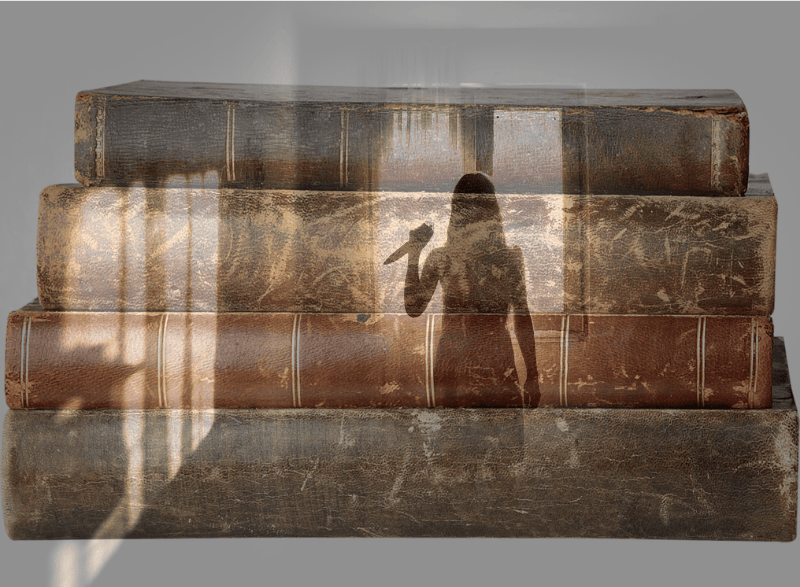Classic Horror Books: Timeless Tales of Terror
Horror, as a literary genre, has been an enduring source of fascination and dread for readers throughout history. Classic horror books have played a significant role in shaping our fears and have left an indelible mark on the world of literature. These timeless tales of terror continue to captivate and haunt readers with their enduring power to send shivers down the spine. In this article, we explore some of the most iconic classic horror books that have stood the test of time.
“Frankenstein” by Mary Shelley (1818)
Mary Shelley’s “Frankenstein” is often hailed as the original science fiction horror novel. It tells the story of Victor Frankenstein, a scientist who dares to play God by creating a living being from the parts of the deceased. The creature he brings to life, often mistakenly referred to as Frankenstein, becomes a symbol of both the tragic consequences of unchecked ambition and the outcast seeking vengeance. Shelley’s novel explores themes of creation, responsibility, and the essence of humanity.
“Dracula” by Bram Stoker (1897)
Bram Stoker’s “Dracula” introduced one of the most iconic characters in literary history: Count Dracula. The novel, presented as a series of journal entries and letters, tells the story of Dracula’s attempt to spread the undead curse in England. It’s a tale of vampire folklore, superstition, and the battle between good and evil. Stoker’s narrative has inspired countless vampire stories and is a cornerstone of gothic horror.
“The Strange Case of Dr. Jekyll and Mr. Hyde” by Robert Louis Stevenson (1886)
Robert Louis Stevenson’s “The Strange Case of Dr. Jekyll and Mr. Hyde” explores the duality of human nature. Dr. Jekyll’s experiment to separate his good and evil sides results in the emergence of the sinister Mr. Hyde. The novella delves into the consequences of suppressing one’s dark impulses and the struggle between civilization and primal instincts, making it a timeless exploration of the human psyche.
“The Picture of Dorian Gray” by Oscar Wilde (1890)
Oscar Wilde’s only novel, “The Picture of Dorian Gray,” is a chilling exploration of the price of vanity and moral decay. Dorian Gray, a young man, remains youthful and handsome while a portrait of himself ages and reflects the depravity of his life. The novel raises questions about the nature of art, the corrupting influence of society, and the consequences of hedonism.
“The Turn of the Screw” by Henry James (1898)
Henry James’ novella, “The Turn of the Screw,” is a masterpiece of psychological horror. A young governess becomes convinced that the two children she cares for are possessed by malevolent spirits. The novella’s ambiguous narrative leaves readers questioning the sanity of the governess and the true nature of the supernatural elements, creating an atmosphere of uncertainty and dread.
“The Haunting of Hill House” by Shirley Jackson (1959)
Shirley Jackson’s “The Haunting of Hill House” is a modern classic in the horror genre. It follows a group of people who stay at the notoriously haunted Hill House to investigate its supernatural occurrences. The novel is known for its intricate and psychologically unsettling storytelling, blurring the lines between the supernatural and the psychological.
“The Shining” by Stephen King (1977)
Stephen King’s “The Shining” is a contemporary classic that has redefined the haunted house subgenre. It tells the story of the Torrance family, who move to the isolated Overlook Hotel. As winter sets in, the hotel’s malevolent spirits begin to prey on the family, particularly young Danny Torrance. King’s mastery lies in his ability to blend supernatural horror with deeply human elements, making “The Shining” a gripping and terrifying read.
“Psycho” by Robert Bloch (1959)
Robert Bloch’s “Psycho” is the book that inspired Alfred Hitchcock’s legendary film. It introduces the infamous character Norman Bates, a seemingly mild-mannered motel owner with a gruesome secret. The novel delves into the mind of a killer and explores the nature of madness, creating a chilling psychological thriller.
“The Exorcist” by William Peter Blatty (1971)
William Peter Blatty’s “The Exorcist” is a tale of possession and demonic forces that terrorize a young girl and her family. The novel explores themes of faith and the battle between good and evil. Blatty’s work remains a harrowing and deeply disturbing classic in the realm of supernatural horror.
“The Call of Cthulhu and Other Weird Stories” by H.P. Lovecraft (1928)
H.P. Lovecraft’s collection of short stories, “The Call of Cthulhu and Other Weird Stories,” is a seminal work in the realm of cosmic horror. Lovecraft’s tales are known for their cosmic indifference and the insignificance of humanity in the face of ancient, eldritch entities. “The Call of Cthulhu,” in particular, has become a touchstone for Lovecraft’s Cthulhu Mythos, influencing countless horror writers and artists.
These classic horror books have left an indelible mark on the genre, shaping the way we perceive fear and the unknown. They continue to be read, studied, and adapted for new generations of readers, reminding us that the best horror stories are those that endure through the ages, keeping us awake at night and making us question the nature of our darkest fears.

